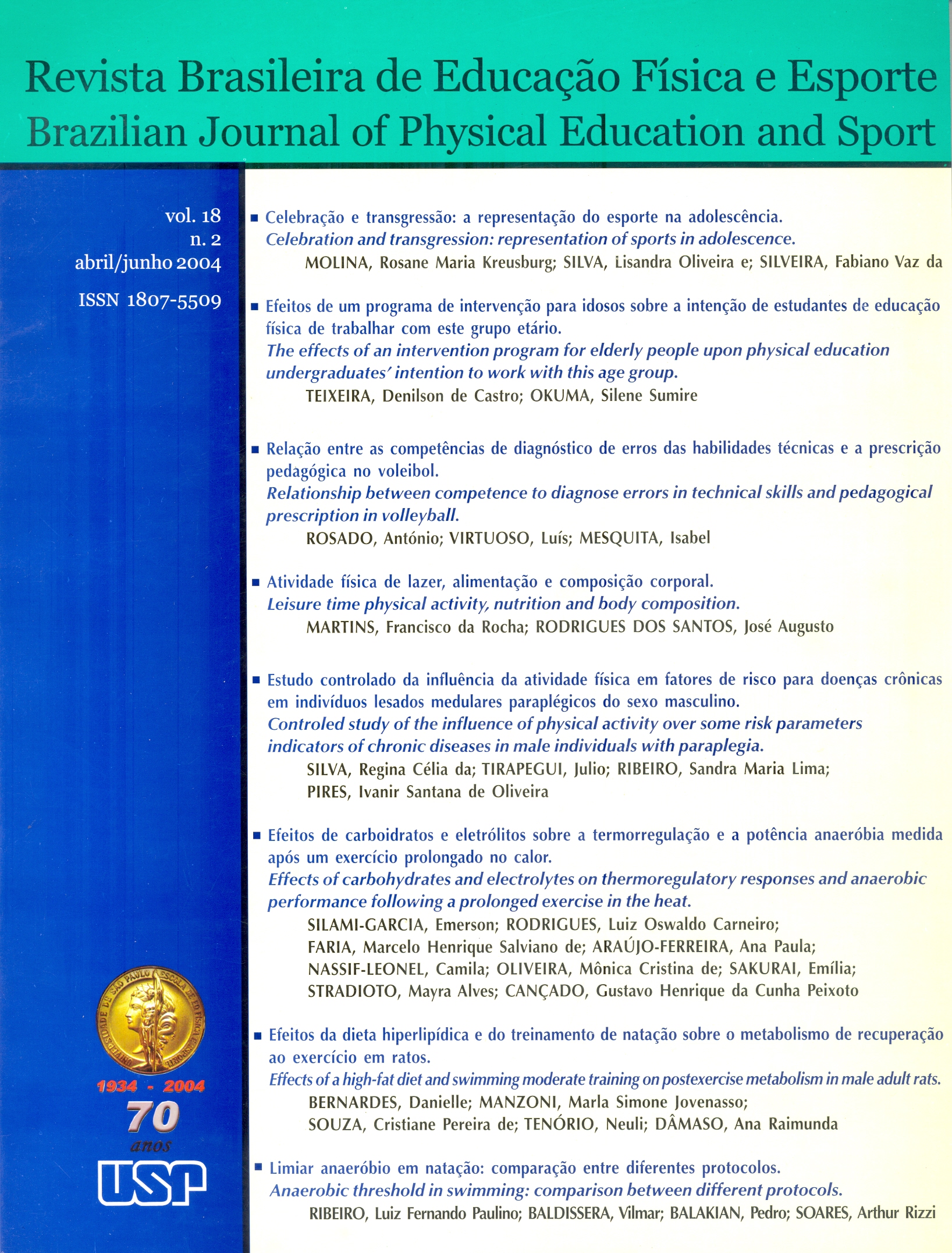Efeitos de carboidratos e eletrólitos sobre a termorregulação e a potência anaeróbia medida após um exercício prolongado no calor
DOI:
https://doi.org/10.1590/S1807-55092004000200006Palavras-chave:
Carboidratos, Desempenho anaeróbio, Ambiente quenteResumo
Carboidratos exógenos contribuem para a manutenção da glicose sangüínea e acredita-se que isto possa melhorar o desempenho anaeróbio após um exercício prolongado. Foram objetivos deste estudo comparar a potência máxima e o trabalho total de atletas, no teste anaeróbio de Wingate realizado após 90 min de exercício prolongado (EP), com e sem a ingestão de mistura eletrolítica carboidratada (MEC), bem como as respostas termorregulatórias ocorridas durante o EP. Sete homens (21,4 ± 4,2 anos; 65,46 ± 10,45 kg; 9,4 ± 1,8% de gordura e 60,38 ± 4,76 mLO2·kg-1·min-1) ingeriram água destilada e cápsulas gelatinosas contendo MEC ou placebo (PLA) a cada 15 min, enquanto realizavam o EP a 60% da carga máxima em uma câmara ambiental (25,9 IBUTG), em duplo-velado. Temperatura retal, freqüência cardíaca, lactato e glicose sangüínea foram medidas. Como era esperado, a glicose sangüínea foi mais alta (p≤0,05) quando a ingestão da MEC (116 ± 12 mg.dL-1) foi comparada à ingestão de PLA (81±7mg/dL). Não houve diferença entre as situações MEC e PLA na termorregulação, na potência relativa (12,63 ± 1,27 W·Kg-1 e 12,64 ± 1,30 W·Kg-1, respectivamente) ou no trabalho total (18,57 ± 2,86 KJ e 20,36 ± 6,01 KJ, respectivamente). Conclusões: A ingestão da MEC não alterou nenhuma das demais variáveis estudadasDownloads
Os dados de download ainda não estão disponíveis.
Downloads
Publicado
2004-06-01
Edição
Seção
naodefinida
Licença
Todo o conteúdo da revista, exceto onde está identificado, está licenciado sob uma Licença Creative Commons (CC-BY)
Como Citar
Silami-Garcia, E., Rodrigues, L. O. C., Faria, M. H. S. de, Araújo-Ferreira, A. P., Nassif-Leonel, C., Stradioto, M. A., Cançado, G. H. da C. P., Oliveira, M. C. de, & Sakurai, E. (2004). Efeitos de carboidratos e eletrólitos sobre a termorregulação e a potência anaeróbia medida após um exercício prolongado no calor . Revista Brasileira De Educação Física E Esporte, 18(2), 179-189. https://doi.org/10.1590/S1807-55092004000200006


